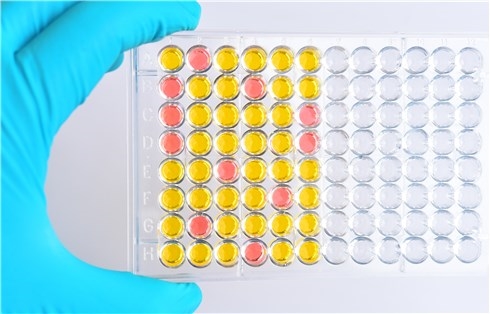Troubleshooting for ELISA

Although it is a simple method, ELISA still suffers various possible problems which result in errors. Firstly, before performing quantitative ELISA, a standard curve determined by standard samples is necessary, which ensures the exact concentration of your samples. Indeed, some possible problems maybe appear in this progress, while more unpredictable problems in test and analysis also can lead to errors. However, as a mature technology, ELISA has been widely applied for over 50 years. Therefore, Creative Biolabs outlines possible problems which can be faced when performing an ELISA and their solutions. We hope these tips are helpful in your experiments.
Problems in Standard Curves Setting
|
Problems
|
Possible Causes
|
Solutions
|
|
The errors in standard solution measurement
|
Standard may not be completely dissolved
|
Dilute standards solutions
|
|
Standard may be degraded
|
Store and handle the standard as recommended
|
|
Pipetting error
|
Use calibrated pipettes and proper pipetting technique
|
|
The errors in standard curve fitting
|
Choose False fitting model
|
Try plotting using different models
|
|
The concentration range is too narrow
|
Use more standard solutions in different concentrations
|
Problems in Low/Poor Single
|
Problems
|
Possible Causes
|
Solutions
|
|
Low single (all plate)
|
Inactive plates or reagents
|
Use new plates and reagents
|
|
Plate washings too vigorous
|
Pipette gently
|
|
Wells dried out
|
Cover plate using a sealing film
|
|
Insufficient development
|
Optimize development temperature and time
|
|
Incorrect wavelengths
|
Check filters and software on a microplate reader
|
|
Low single (positive control only)
|
Standard inappropriately stored
|
Reconstitute new standard
|
|
Incorrect calculation of dilutions
|
Check calculations
|
|
Low signal (samples only)
|
Target below level of detection
|
Decrease dilution factor or concentrate samples
|
|
Incompatible sample type
|
Use a secondary antibody that was raised against the primary antibody species
|
Problems in High Single
|
Problems
|
Possible Causes
|
Solutions
|
|
High signal (samples)
|
Samples contain antigen above assay range
|
Dilute samples
|
|
Inadequate washing
|
Increase washing steps
|
|
Oversaturated samples
|
Decrease incubation time or temperature
|
|
High signal (negative control)
|
Sample contamination
|
Use fresh reagents and pipette carefully
|
|
Inadequate washing
|
Increase washing steps
|
|
Detection antibody interacts with coating antibody
|
Ensure the antibodies do not cross-react
|
Other Problems
|
Problems
|
Possible Causes
|
Solutions
|
|
High background
|
Background wells contaminated
|
Pipette carefully, use multichannel pipettes
|
|
Inadequate washing
|
Increase washing steps
|
|
High variation
|
Bubbles in wells
|
Ensure no bubbles present before reading
|
|
Inconsistent pipetting
|
Ensure no bubbles present before reading
|
|
Edge effect
|
Use calibrated pipettes and careful pipetting
|
|
Non-homogeneous samples
|
Thoroughly mix samples before pipetting
|
|
Stacked plates
|
Do not stack plates
|
Although ELISA is widely used in research, unexpected mistakes will occasionally happen that lead to errors. Therefore, we summarize some usual problems in ELISA according to our experiences. For more details, please feel free to contact us.
For Research Use Only | Not For Clinical Use
Related Services:
Products:


